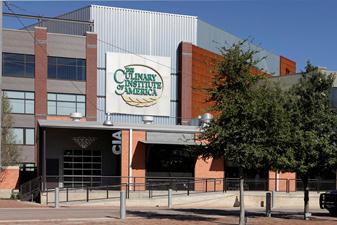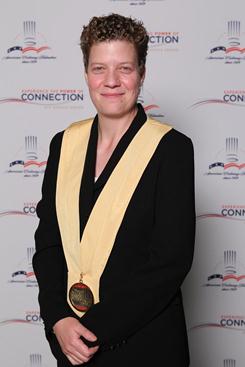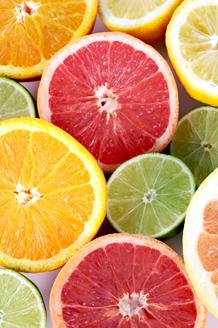First Class of Students Begins Associate-Degree Studies at The Culinary Institute of America, San Antonio
 The Culinary Institute of America (CIA) welcomed its first class of 24 students who began studies toward their associate degrees in culinary arts at the college's San Antonio campus on Monday, August 22. Prior, CIA San Antonio students would earn a certificate in culinary arts, then transfer to the college's Hyde Park, N.Y., campus to complete their degrees.
The Culinary Institute of America (CIA) welcomed its first class of 24 students who began studies toward their associate degrees in culinary arts at the college's San Antonio campus on Monday, August 22. Prior, CIA San Antonio students would earn a certificate in culinary arts, then transfer to the college's Hyde Park, N.Y., campus to complete their degrees.
The new associate degree in San Antonio is based on the same unmatched curriculum the college has been teaching at Hyde Park for decades. Designed to prepare students for a successful career in the dynamic foodservice and hospitality world, a CIA education provides graduates with a command of both classic and contemporary culinary methods and professional practices.

 The American Culinary Federation’s 2011 Chef Educator of the Year says success and failure through solo and team competitions helps prepare students for the real-life rigors of the workplace.
The American Culinary Federation’s 2011 Chef Educator of the Year says success and failure through solo and team competitions helps prepare students for the real-life rigors of the workplace. Big shifts in U.S. foodways emerging at this year’s conference included “clean” menu descriptions, Korean influences, strategic use of salt and black pepper and “invisibly healthy” indulgence.
Big shifts in U.S. foodways emerging at this year’s conference included “clean” menu descriptions, Korean influences, strategic use of salt and black pepper and “invisibly healthy” indulgence. As you plan your goals and desires for your courses, student activities and department, here are three useful tools to inspire.
As you plan your goals and desires for your courses, student activities and department, here are three useful tools to inspire. Take a 50-pound bag of carrots and peel and chop 40 pounds of them. What percentage is that? The following 25 questions not only indicate math areas where students might be weak, but also teach basic culinary and management skills.
Take a 50-pound bag of carrots and peel and chop 40 pounds of them. What percentage is that? The following 25 questions not only indicate math areas where students might be weak, but also teach basic culinary and management skills. Many foodservice students today have yet to experience fine dining. But it’s just as important to expose them to the several other service styles in the marketplace so they may excel in their careers.
Many foodservice students today have yet to experience fine dining. But it’s just as important to expose them to the several other service styles in the marketplace so they may excel in their careers.